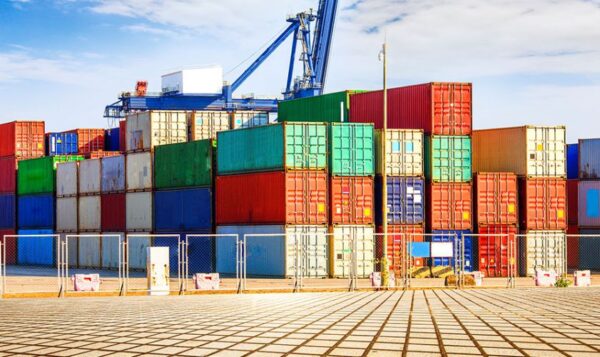Introduction:
In the global tapestry of commerce, shipping containers have long played a silent but pivotal role in facilitating the movement of goods across continents. However, what was once merely a utilitarian vessel for cargo has undergone a metamorphosis, transcending its original purpose. This article embarks on a journey through the evolution of shipping containers, unraveling the myriad ways they have transcended traditional cargo transportation and emerged as versatile tools for innovation.
The Evolution of Shipping Containers:
The inception of shipping containers revolutionized the logistics landscape. Their standardized dimensions, first proposed by Malcolm McLean in the 1950s, paved the way for efficient and seamless intermodal transportation. Over the decades, these rectangular steel behemoths became the backbone of global trade. However, the success story of traditional cargo transport is not without its challenges. Overcapacity issues, logistical bottlenecks in port operations, and environmental concerns are prompting a reevaluation of container use.
Beyond Cargo – Diverse Applications:
Urban Architecture: The repurposing of shipping containers in urban architecture is a testament to human ingenuity. From compact container homes and trendy office spaces to multi-story structures, architects and designers are leveraging the modular nature of containers to address housing shortages, promote sustainability, and provide cost-effective solutions.
Retail and Pop-Up Shops: The retail industry, always seeking novel ways to capture consumer attention, has embraced container-based structures for their adaptability and mobility. Pop-up shops, food stalls, and temporary retail spaces have become dynamic canvases for creative entrepreneurs, offering a unique and eye-catching shopping experience.
Farming and Agriculture: In the agricultural realm, shipping containers have transcended their maritime origins to become integral components of innovative farming practices. Hydroponics, vertical farming, and rural agricultural solutions find expression within the confines of these steel boxes, overcoming challenges posed by limited arable land and adverse climate conditions.
Disaster Relief and Emergency Housing: When disaster strikes, the speed of response can mean the difference between life and death. Shipping containers have emerged as crucial elements in rapid-response solutions, providing sturdy and quickly deployable emergency housing in the aftermath of natural disasters or conflict.
Technological Advancements:
Smart Containers: The integration of Internet of Things (IoT) technology has propelled shipping containers into the realm of smart logistics. Smart containers, equipped with an array of sensors and communication devices, facilitate real-time tracking, monitoring, and securing of cargo. This not only enhances supply chain visibility but also ensures the security of valuable goods during transit.
Automation in Handling:
Automation has become a cornerstone in the evolution of container handling operations. Automated cranes, guided vehicles, and robotic systems are transforming traditional loading and unloading processes. This not only reduces operational costs but also significantly enhances the efficiency of port operations, contributing to smoother and faster cargo movements.
Environmental Impact and Sustainability:
Container Upcycling: Beyond the buzz of innovative applications, shipping containers are contributing to sustainable living through the practice of container upcycling. Discarded containers find new life as homes, offices, and even art installations. This not only reduces waste but also promotes a circular economy mindset.
Reducing Carbon Footprint: The environmental implications of container-based solutions extend beyond recycling. Container architecture often involves the use of sustainable materials, and the modular nature of containers minimizes construction waste. The adaptability of container structures supports energy-efficient design principles, further contributing to a reduced carbon footprint.
Challenges and Future Outlook:
Regulatory Hurdles: The widespread adoption of container-based solutions faces regulatory challenges. Zoning laws, building codes, and international regulations vary widely and can pose obstacles to the seamless integration of innovative container projects. Bridging the gap between regulatory frameworks and evolving industry practices is crucial for the continued growth of container-centric innovations.
Technological Integration Challenges: While technological advancements have propelled container use into new frontiers, challenges such as cost, compatibility, and cybersecurity concerns remain. The successful integration of these technologies requires collaborative efforts between the shipping industry, technology providers, and regulatory bodies to establish standardized practices and protocols.
Global Trends and Future Projections: Looking forward, global trends indicate a continued evolution in shipping container applications. From smart cities incorporating container-based structures to ongoing advancements in sustainable materials, the future holds exciting possibilities for the role of shipping containers in diverse industries. As innovative minds continue to push boundaries, shipping containers stand poised to redefine industries and contribute to a more resilient, sustainable, and technologically advanced future.
Conclusion:
In retrospect, the journey of shipping containers from functional cargo carriers to versatile tools of innovation is nothing short of remarkable. Beyond their utilitarian roots, these steel giants have become catalysts for sustainable living, technological advancement, and creative design. As the world continues to explore novel applications, the humble shipping container remains at the forefront, a symbol of adaptability, resilience, and untapped potential. The canvas is vast, and the future promises even greater revelations as shipping containers continue to shape the narrative of global innovation.
